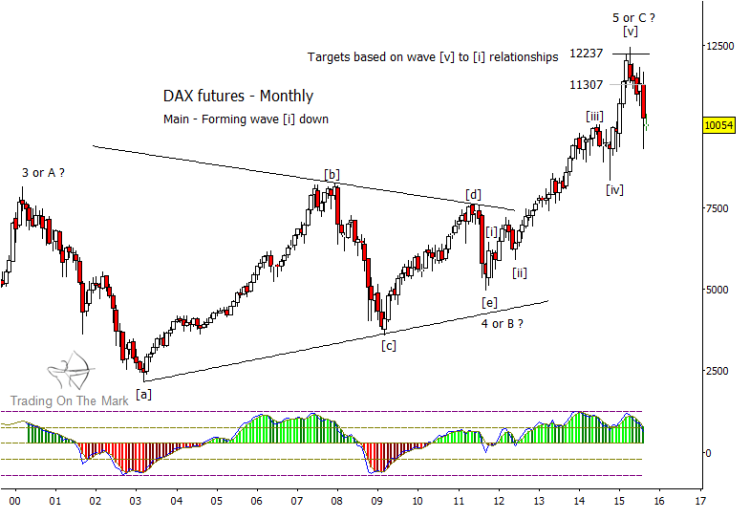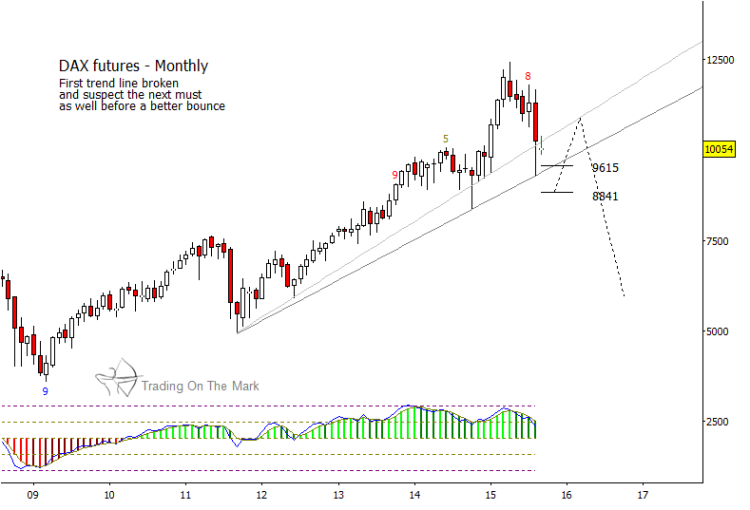Until recently, the German DAX has been the darling of market bulls. A fairly steady rally from the 2011 low sent it soaring relatively higher than its counterpart indices in the U.S. and Europe, but 2015 has seen it fall proportionately farther than other indices in developed markets, triggering the current German DAX bear market.
Given its record of strength, can investors and traders expect the DAX to hold up well during the next phase of correction in equity markets? The structure of the rally and preceding swings in the index suggest not.
Rather, we expect the German DAX bear market to decline to near half its recent highs during the next two to three years.
If one steps back to view the entirety of price action during the last 15 years, a classic structure emerges – a converging triangle followed by an impulsive thrust out of the range. This is a reversal pattern.
On the monthly DAX chart shown below, the swings between 2000 and 2011 count well as an Elliott wave triangle. The subsequent rally then displayed the clear five-wave structure we would expect of an impulsive terminal wave that should follow a triangle. Moreover, the rally advanced into the target range that was derived from Fibonacci relationships among the sub-waves of the rally – breaching resistance at 11,307 and then stalling near 12,237.
The next chart shows some key areas to watch on a monthly time frame for the German DAX bear market. These areas may provide clues about where the index will be headed next (and when). Price has already broken twice beneath a major trend line, drawn in light gray. Below that, the lows of 2011 and 2014 defined the next trend line to be tested. If the index sees another push lower in September, then the dark trend line is in danger of breaking. That scenario probably would offer traders an upward “kiss back” later this year, and bring price near one of the two lines as a potential trade entry.
On the other hand, if the index rallies from its present area in coming days and weeks, then it probably will continue to rally into the end of the year, producing either a new high or a lower high. We rate that scenario as less likely.
If a bear market truly is taking hold, then the weekly chart offers some targets for the next downward thrust – something that would precede the possible kiss back mentioned earlier. continue reading about the German DAX bear market…










